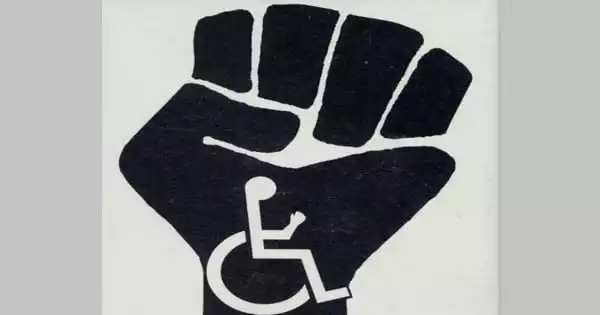Disability is a category in and of itself, and anyone can become a victim at any time. It can be caused by a sudden accident, a fall down a flight of stairs, or a disease. Disability has no regard for socioeconomic status. Because disability catches up with most people in its fold in old age, it is a category into which any of us may fall at some point.
Even today, the disabled in India regard their physical or mental limitations as a source of shame or inspiration for others. By focusing on overcoming the disability, we miss the fact that a disability cannot be overcome by a disabled person, no matter how heroic she or he may be. The Disability Rights Movement in the West has recognized this, and as a result, they proclaim that “it is okay, even good, to be disabled.”
The Disability Rights Movement:
Unlike other movements such as Feminism or the Lesbian Movement, which have distinct agendas of gender justice or the right to sexual orientation, the Disability Rights Movement lacks a systematic path. Even in the West, the Disability Rights Movement is relatively new, and it seeks to draw strength from the traditional legal order rather than criticizing or deconstructing it. The characteristics of this movement in the West are neatly summarized by Joseph Shapiro: “The disability movement is a mosaic movement for the 1990s.” Its most important feature is its diversity. No leader or organization can claim to speak on behalf of all disabled people.”
The Disability Rights Movement in India and other Third World countries is disorganized and discursive, with no written documents tracing its origins. Instead of banding together, sections of the disabled, such as blind people, people with physical disabilities, deaf and dumb people, and people with mental disabilities, have launched separate movements and struggles, primarily through NG0s. It was even more difficult for all disabled groups to come together due to the vast differences in their problems. There are two significant reasons for such a scenario.
To begin with, in our country, the disabled are destined to struggle to meet basic needs such as food, shelter, and education, and thus they are destined to be disabled specific in their struggles. Second, advocates for disability rights in India lack coherence in their agenda; some focus solely on rehabilitation and research, while others are solely concerned with job creation, and still others are entirely preoccupied with efforts in the education sector. Few people in India ever discuss the disabled’s ‘Civil Rights’ or ‘Crisis of Identity.’ Under such conditions, the various groups must work separately, making it impossible for them to collaborate on a common agenda.
Actually, the Disability Rights Movement in India was launched by NGOs, and as a result, a large number of NGOs have sprouted up all over the country. Instead of cooperating to strengthen the movement, NGOs frequently engage in unwarranted and unhealthy rivalry. Similar conflicts were observed in various sections of the disabled. While some organizations are making serious rehabilitation efforts and genuinely working for the upliftment of the disabled, others are simply cashing in on the cause and doing nothing to help the disabled.
Assumptions about the disabled:
Some stereotyped presumptions prevailed about the disabled in our country like:
- Disabled people are the most vulnerable section of society and have been ignored by the state and society alike for a long.
- Disabled people have always been dependent and, therefore, need helping hands and gracious charity.
- Disabled people are victims of their own bad luck.
- Disableness is the punishment for sins he has never committed in this life.
Such assumptions about the disabled do nothing to help them. This approach perpetuates the stereotype of the disabled as victims and objects of pity and charity.
Because of their limitations, people with disabilities are thought to have a very small sphere in which to operate. So, if a disabled person accomplishes something outside of his or her small ‘sphere,’ he or she is considered to have nearly overcome his or her disability. He or she is then portrayed as a role model and source of inspiration for the non-disabled community. This image has a strong impact on the average disabled person, who lacks the ability to live up to such heroic standards. The average disabled person tends to compare their ‘small successes’ to the ‘large successes’ of their peers. As a result, they develop an inferiority complex.
Government’s Solace for the disabled:
Until 1995, there was no law that even defined disability discrimination. Only with the passage of the ‘Persons with Disabilities Act’ in 1995 did discrimination against people with disabilities come under the purview of the law.
Until 1995, the majority of welfare measures implemented by states were through affirmative action. The Ministry of Social Welfare was primarily concerned with the problems of people with disabilities and the provision of benefits to them.
Rehabilitation of people with disabilities by opening shelter workshops and educational and research institutions like the National Institute of Visually Handicapped, Dehra Dun, the National Institute for the Mentally Handicapped, Secunderabad, the National Institute for the Orthopaedically Handicapped, Calcutta, and the Ali Anwar Jung National Institute for Hearing Handicapped, Mumbai providing basic education to individuals with disability by funding NGO s, opening special schools and awarding scholarships for students with a disability, providing employment through job reservations mainly in Class 3 and 4 in Central and State Government Departments and giving disabled people travel concessions and installing awards for disabled workers and institutions working for the welfare of the disabled.
Some major developments in the International Disability Rights Movement in the early 1980s caused a shift in the Government of India’s attitude. The passage of the “Mental Health Act, 1987” was the first significant step. The Act is intended to protect mentally ill people in matters of admission and detention in psychiatric hospitals, as well as custody of his or her person, property, and management, and human rights.
Persons with Disabilities Act 1995
In December 1992, the Economic and Social Commission for the Asia-Pacific region convened a meeting in Beijing to kick off the Asia-Pacific decade of disabled people. The meeting declared 1993-2000 the Asia-Pacific decade, with the goal of “full participation and equality of people with disabilities.” To give legislative effect to the preceding proclamation, India enacted the ‘Persons with Disabilities (Equal Opportunity, Protection of Civil Rights, and Full Participation) Act in 1995, which went into effect on January 1, 1996.
Objectives of the Act:
To spell out the responsibility of the State towards the prevention of disabilities, protection of rights, provision of medical care, education, training, employment, and rehabilitation of persons with disabilities.
1. To create a barrier-free environment for disabled persons.
2. To remove any discrimination against disabled people in the sharing of development benefits vis-à-vis non-disabled persons.
3. To counteract any situation of abuse and the exploitation of disabled persons.
4. To lay down strategies for the development of comprehensive programs and services and the equalization of opportunities for disabled persons.
5. To make special provisions for the integration of persons with disabilities into the social mainstream.
Critics:
A close examination of the Act leaves us with the impression that “the government is a generous donor and disabled people are absolute dependents.” This is a significant impediment to providing equal opportunities to the disabled. Instead of emphasizing disabled people’s abilities, the Act emphasizes their activity limitations, perpetuating the victim image of disabled people.
Unfortunately, the Act does not place a high priority on ensuring basic rights such as the right to human dignity, the right to equal concern and respect, the right against discrimination in public employment and educational institutions, the right against exploitation, the right against victimization, and so on.
The Act completely ignored some critical aspects, such as pre-school education for disabled children, special problems for disabled parents, special problems for female disabled, games, sports, and cultural activities, exploitation of disabled by their own families, and higher education for disabled.
Although the Act’s implementation has been gradual, this does not imply that it has not aided the disabled in any way. It has served as a platform for uniting and mobilizing disabled people across the country. It is also significant to see the disabled participate in decision-making processes through their representation in various policy-making and shaping bodies established by the Act.
The success of this Act, however, will be heavily reliant on the extent to which political leaders and bureaucratic executives internalize the Act’s values, sensibilities, and goals. If people with disabilities are to be considered full citizens of India, their right to equal concern and respect must be enshrined in the supreme law of the land.
















